This article contains affiliate links that add gold to our coffers. Support our small team by using our links at no cost to you. Thank you!
Featured image from Waterdeep Dragon Heist by Wizards of the Coast.
Earth. Fire. Air. Water. When the world was young, the Inner Planes belonged to the Elementals. Over time, natives of the Material Plane invaded and conquered parts of the four planes. Empires waxed and waned, the elements eventually taking back what was theirs. The City of Brass was constructed as a place where all planar beings could trade under the watchful eye of the Grand Sultan, and since, there has not been a major attempt at colonizing the Inner Planes.
Welcome to the second half of our exploration of the Inner Planes, where we will be covering the other half of the planes, as well as the para-elemental planes and other representations of the elemental planes.
Non-Traditional Representation
The rest of this article deals with 5e cosmology, but there are other ways to represent the Elemental Planes. This section will cover 4e cosmology and a homebrew idea.
The World Axis
Instead of four Elemental Planes, there is just the Elemental Chaos sitting below the Material Plane. This borderless energy shapes into the different elements at times, including what are called the quasi-elemental realms (lightning, mineral, steam, dust, and smoke), but there is no order in where they are shaped. Many locations in the traditional Inner Planes still exist in the World Axis model, oftentimes being sections of elemental stability amongst the shifting plane.
Borderless Inner Planes
In this cosmology, instead of being separate from the Material Plane, the Elemental Planes are directly connected to it. Meaning, if one walked far enough, they would enter into, for example, the Plane of Earth, where the mountains would become taller and taller, the air would become thinner and thinner, and after enough time, earth would be all there was. This idea would fit in well with the One World cosmological model.
Similar to traditional cosmology, the main part of the Material Plane is a confluence of the four elements, and as one goes towards one of the four “poles,” the influence of the element becomes stronger. Towards the Plane of Air, the ground may give way to a cliff that drops into infinite air, with chunks of floating earth scattered around. Towards the Plane of Water, land gives way to an infinite sea dotted with islands, and far enough away, the water rises and replaces any air left. Toward the Plane of Fire, the desert becomes the Cinder Wastes, which then gives way to volcanoes and then, eventually, walls of flame.
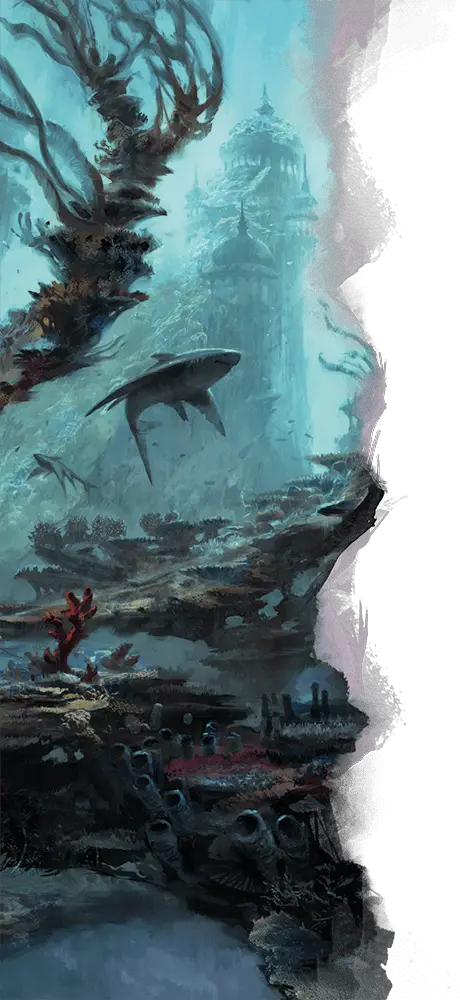
The Plane of Water
This plane takes the form of an endless sea with a warm sun moving across the sky and scattered islands floating on the foamy surface, but the true extent of the plane lies in the depths of the sea. Below the surface is a coral reef that seems to stretch endlessly, teeming with life. The Plane of Water might be the plane with the widest variety of non-elemental life, with beasts, humanoids, and monstrosities alike swimming through its depths. Above its surface, patches of land are hotly contested by non-natives to the plane, and latched-together cities of rafts and ships float around. Most natives to the plane never even see the surface, so anything above the surface is ignored by the endless sea’s denizens.
The surface in the Plane of Water exists only in extremes. If the weather is not calm, it is a raging storm. If the tides are not gently rising and falling, there is a wave of water sweeping across the surface. It is a dangerous place to be, and most air-breathing creatures are not there by choice. Rare storms in the Material Plane are actually portals to the Plane of Water and transport any poor soul swept up in them.
The table below is adapted from AD&D’s Manual of the Plane and contains planar effects that travelers can encounter below the surface of the plane.
| d12 | Planar Effect |
|---|---|
| 1-3 | Steam Current: the result of an incursion by the Plane of Fire, this is a flowing mass of steam. These are short-lived but dangerous, as steam burns faster than fire. Creatures take 2d10 fire damage at the start of every turn they are inside it. |
| 4-6 | Whirlpool: this free-spinning disk of spinning water is usually, but not always, found at the surface. This attracts a lot of debris, so every turn a creature is caught in it, they must make a Dexterity saving throw or take 1d10 bludgeoning damage. Escaping is also difficult, as swimming speed is halved when going against the flow, and it may require a saving throw as well. |
| 7-8 | Ice Floe: a section of frigid water from the Plane of Ice, these can be pieces of floating ice or simply a body of fast-moving frigid water. Force the players to make an Extreme Cold saving throw, found on pg. 110 of the Dungeon Master’s Guide. |
| 9 | Tidal Bore: a current that has aired off its normal path and is whipping through the plane. The players must make a Dexterity saving throw or take 1d10 bludgeoning damage as they are tossed around. Additionally, failure could cause the party to become separated as some of them are whisked away. |
| 10 | Silt Flow: hailing from the Plane of Ooze, this slow-moving flow of muddy water will reduce sight while inside it to 20 ft. It also has a chance to contain an ocean predator on the hunt. |
| 11 | Airy Water Pocket: a a welcome boon for drowning travelers, this pocket of magic allows any creature inside it to breathe water as if under the effect of the Water Breathing spell. Rarely, if potent enough, the effects of it may last for some time outside the pocket. |
| 12 | Planar Vortex: a portal to another plane, either the Material Plane or another Elemental Plane. These may be permanent portals or just a temporary vortex. |
A list of creatures that could be encountered on the plane:
- Marids
- Dragon Turtles
- Krakens
- Merfolk
- Merrow
- Ocean Beasts
- Pirates
- Tortles
Citadel of a Thousand Pearls
This opulent palace is where the ruler of marids resides, Kalbari al-Durrat al-Amwaj ibn Jari, Padishah of the Marids, Pearl of the Sea, Mother of Foam, Mistress of the Rivers, Savior of Fish, Patron of Waterspouts. The interior of the palace is filled with air to make the slaves and guests more comfortable.
Sea of Worlds
This is the name given to the collection of islands on the surface of the plane. However, almost all of these islands aren’t true islands, instead being chunks of land resting on top of the coral reef below.
Sea of Light and Darkened Depths
There are two broad distinctions given to the underwater parts of the plane, the Sea of Light being the upper portions where sunlight can reach, and the Darkened Depths being the deepest parts of the plane where sunlight never goes. The Sea of Light is filled with ocean life and where most inhabitants of the plane live, including animals, aquatic humanoids, and the Marids and their citadels.
The Darkened Depths is a dangerous place, due in part to the crushing pressure and biting cold that comes with being that deep underwater and because of the creatures that dwell. The depths of the Plane of Water are home to leviathans and krakens, monsters of myth and legend, larger than any ship, and more dangerous than any storm.
Isle of Dread
This rare, true island is directly connected to the Material Plane by means of a regular storm that washes over the island. However, using this can be dangerous due to the strange tides and currents that exist on the Plane of Water, and the shores of this island are littered with shipwrecks.
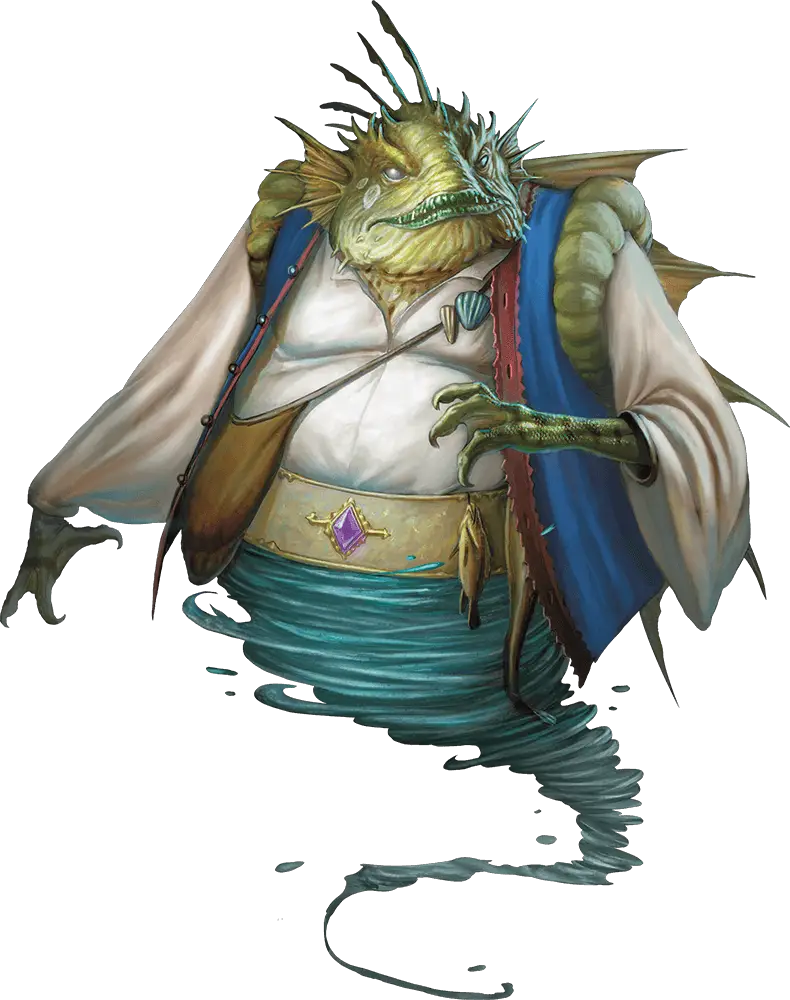
The Marid
Marids prefer wearing colorful outfits and giving themselves many titles to grant an air of importance, regardless of their position in the hierarchy. They inhabit grand citadels made of coral, often fashioned directly out of the coral reef they live within. Marids gather slaves more for the status than for using them to work. As such, they prefer slaves with strange or exotic skills, and they aren’t above outright kidnapping mortals from the Material Plane.
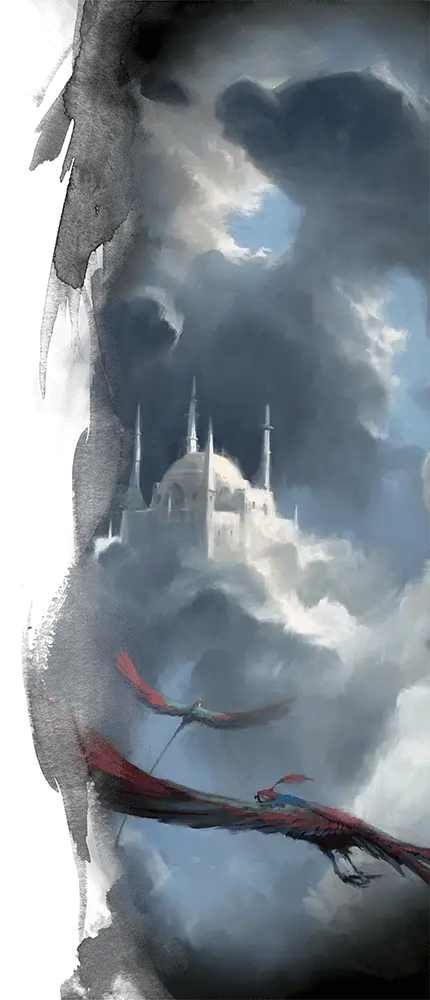
The Plane of Air
The Plane of Air may be the least established plane in 5e. However, it may also be the most hospitable plane, as long as one has a method of flying. The plane is an endless expanse of air, criss-crossed by currents and speckled with motes of earth. These motes serve as the foundation for the life that thrives in the plane, though some powerful magic users can construct solid foundation out of clouds.
The following table has environmental hazards that players can encounter in the plane and is adapted from AD&D’s Manual of the Planes.
| d12 | Planar Effect |
|---|---|
| 1-2 | Cloud Banks: a common and benign effect, cloud banks simply reduce visibility. Depending on the thickness of the cloud, this can range from 50 yards to 10 ft. |
| 3-4 | High Winds: Another common effect, high winds can push travelers off course. Use the Strong Winds rules from the Dungeon Master’s Guide pg. 110 and have the party make a skill check to maintain course. |
| 5 | Sirocco: a scorching hot current from the Plane of Ash, this causes players to make a Constitution save or take 1d8 fire damage. |
| 6 | Rainstorm: use the rules for Heavy Precipitation on pg. 110 of the Dungeon Master’s Guide. |
| 7 | Lightning Storm: in addition to the effects of a rainstorm, creatures are at risk of being struck by lightning. The chance of a bolt striking increases by 10% each round, and resets after a strike. When a bolt strikes, the creature it strikes is chosen at random, but there’s a 50% chance it will miss. The creature must make a Dexterity saving throw, taking 3d10 lightning damage on a fail, half on a success. |
| 8 | Snow Storm: hailing from the Plane of Ice, this storm reduces visibility similar to a rainstorm and forces the players to make a saving throw against Extreme Cold. |
| 9 | Maelstrom: the deadliest weather on the plane, a maelstrom appears similar to a tornado. Unless avoided, use the spell Whirlwind for the effects. |
| 10 | Dust Storm: in addition to the effects of high winds, creatures whose eyes are unprotected suffer blindness while in the storm. |
| 11 | Hailstorm: while it resembles a rainstorm or snow storm, the hailstorm is much more dangerous. In addition to the effects of a snowstorm, any creature caught in a hailstorm takes 1d2 piercing damage at the start of every round they are inside. Thankfully, hailstorms are short-lived and pass quickly. |
| 12 | Planar Vortex: a portal to another plane, either the Material Plane or another Elemental Plane. These may be permanent portals or just a temporary vortex. |
Some potential inhabitants of this plane are:
- Djinni
- Aarakocra
- Cloud Giants
- Harpies
- Rocs
- Perytons
- Aerial Owlbears
- Androsphinxes
- Animental Giant Eagles
Labyrinth Winds
This is the name given to the complex web of winds and currents that make up the Plane of Air. Many natives can navigate these winds with ease, but visitors to the plane can easily get lost among the twisting and branching. Here and there, kept secret by specific sequences of paths, are hidden realms, protected from attackers by the difficulty of navigating to them.
One such realm is the city of Aaqa, ruled by the mysterious Wind Dukes, populated by Aarakocra and Vaati. In fact, Aaqa is the birthplace of the Aarakocra, and the cradle of their civilization. Few outsiders ever reach Aaqa, and visitors are all but unheard of.
Citadel of Ice and Steel
Although not mentioned in 5e lore, previous editions placed the head of the Djinn in this citadel at the center of a perfect oval of elemental ice and earth. The current ruler is the Great Caliph Husam al-Balil ben Nafhat al-Yugayyim, the Master of the Clouds and Son of the Breezes, Commander of the Four Winds, Ruler of All Djinn, Defender of the Heavens, Prince of Birds.

The Djinn
Among the genies, the Djinn are seen as the kindest and most hospitable. Rather than take slaves, they employ servants, though they are reluctant to part with them. Known for their sense of mischief, Djinni are also creatures of comfort and ease, preferring to lounge in their grand castles among their gardens, courtyards, and fountains.
The Para-Elemental Planes
At the border where two planes meet, the clashing of elements creates a para-elemental realm, often considered a plane in its own right. These serve as the borders between planes and each have a unique feature that sets them apart from their neighboring planes.
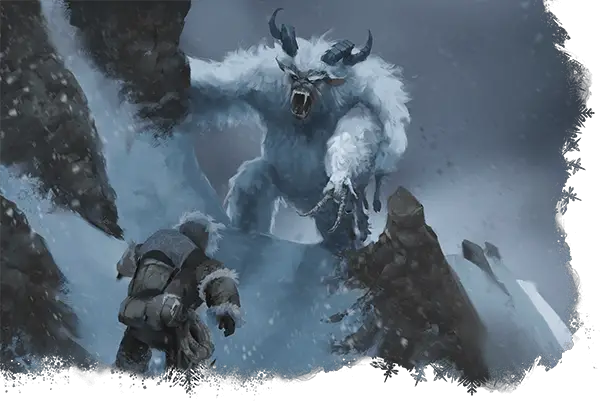
The Plane of Ice
A seemingly endless glacier with an eternal snow storm above, Frostfell is dangerous and inhospitable. Most travelers stick to the skies, braving the howling wind and snow to avoid the glacier beneath. The glacier is peppered with caverns and caves, and any inhabitants are caught in an endless battle for survival.
Some creatures you might encounter on or above the Plane of Ice are:
- Frost Salamanders
- Frost Giants
- Storm Giants
- White Dragons
- Remorhaz
- Yetis
- Bheur Hags
- Polar Bears
- Animental Ice Bats
The Plane of Ooze
The Swamp of Oblivion lacks any solid ground, instead being mud all the way down. A few settlements are built into the massive trees that make up the surface of this plane. It is said any magic item cast into the swamp is lost for a century.
Some inhabitants you might encounter are:
- Giant Insects
- Green Hags
- Black Dragons
- Froghemoths
- Shambling Mounds
- Will-o’-Wisps
- Giant Crocodiles
- Giant Constrictor Snakes
The Plane of Magma
Part of the mountain range called the Fountain of Creation, this plane is made of volcanoes above and magma beneath.
Some creatures encountered on the plane include:
- Azer
- Fire Giants
- Red Dragons
- Elemental Kruthiks
- Animental Giant Scorpion
- Elemental Mummies
The Plane of Ash
This plane is an endless wall of flames, ash, and smoke. Breathing is difficult, as is traveling or seeing. Motes of earth can attract ash which aggregates into clusters of solid land. In these small refuges, you can often find outlaws or fugitives.
Some encounters with inhabitants might include:
- Bandits
- Rogue Modrons
- Fallen Angels
- Blue Dragons
- Cultists
- Dusk Hags
Conclusion
The Inner Planes contain exciting and diverse locales and locals, and it can serve as a great setting for a single adventure or an entire campaign. Consider how the other planes have interacted with the Elemental Planes over the history of your setting. Do banished gods claim realms in the Inner Planes? Have colonies of genies from the Elemental Planes conquered parts of the Material Plane? The mystique and mysticism of the planes can provide a lot of opportunity for blending together the different aspects of cosmology.

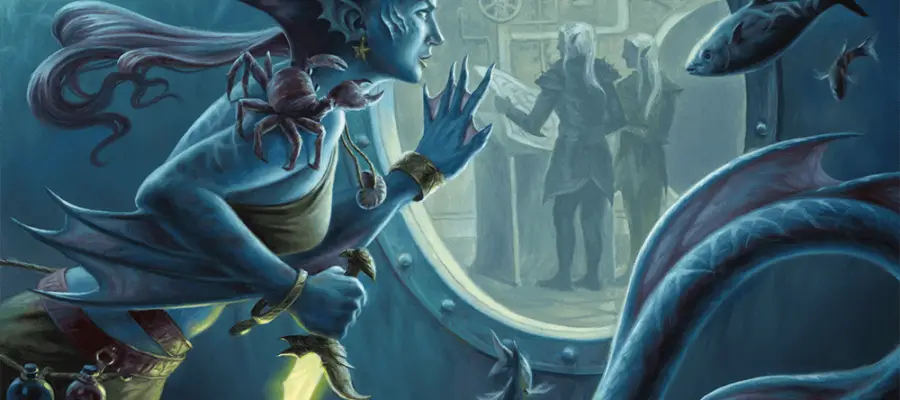
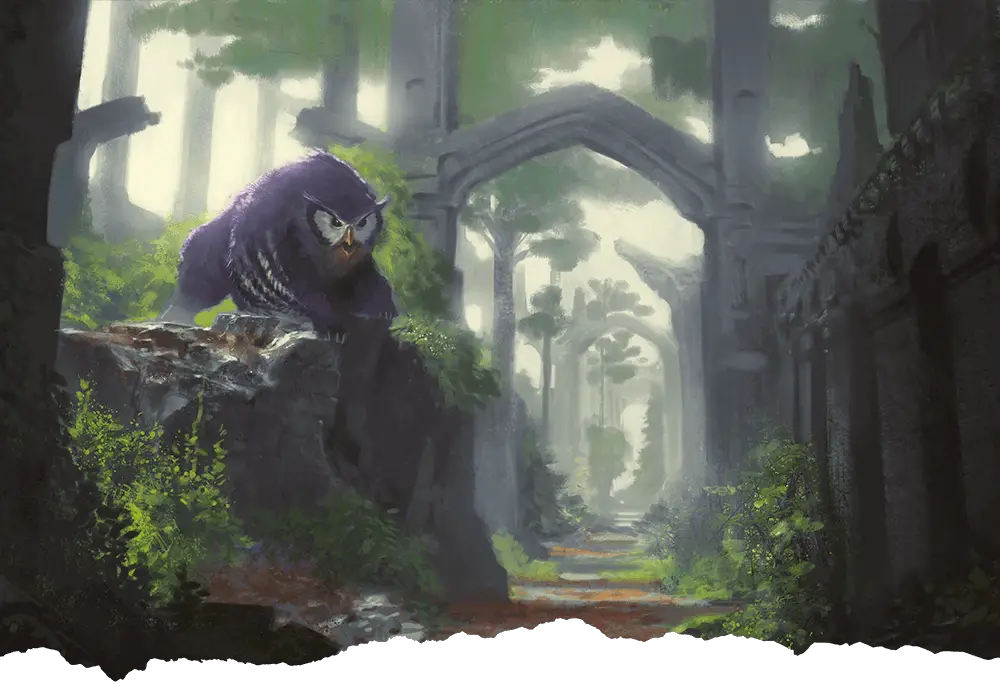


This is a great series!
Added to the Blog Database.